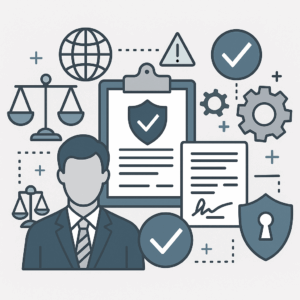
Compliance and risk mitigation aren’t just buzzwords for legal teams—they’re part of the day-to-day reality. With increasing regulatory complexity and rising expectations from clients and stakeholders, legal departments must ensure that every move is documented, defensible, and aligned with evolving rules.
But achieving this kind of operational clarity isn’t something that happens by accident. It requires a thoughtful approach, streamlined processes, and tools that support consistent, auditable workflows.
Understanding the Compliance Landscape
From data privacy laws and labor regulations to industry-specific rules, the scope of legal compliance continues to grow. What used to be a once-a-year internal review has become a continuous process that touches nearly every part of a legal team’s operations.
Missed deadlines, incomplete documentation, or vague reporting structures can all expose a firm or company to unnecessary risk. And regulators are becoming more tech-savvy and less tolerant of manual excuses. That’s why many legal teams are rethinking how they handle compliance from the ground up.
Why Risk Is No Longer Just Legal’s Concern
Risk management is often assumed to be the legal team’s domain—but in practice, it’s a company-wide effort. Business units, HR, procurement, and IT all play a role in ensuring processes stay within legal and ethical boundaries.
Legal operations must bridge the gap between these departments, helping them follow consistent practices, track obligations, and report issues before they escalate. When legal teams are siloed or reactive, risks tend to multiply. But when they’re embedded in operational workflows, they become a proactive part of business strategy.
The Role of Process in Reducing Risk
Most risks come from gaps in processes—unclear responsibilities, inconsistent communication, or documents that are difficult to trace. One of the most effective ways to mitigate risk is simply to standardize the way legal work is done.
This includes:
- Defining approval workflows
- Establishing templates for contracts and disclosures
- Creating centralized records of activity and communication
- Documenting key dates, renewals, and compliance obligations
By creating a structured system, legal teams make it easier to spot problems before they become liabilities. It also helps ensure consistency during audits, internal reviews, or regulatory inquiries.
Tracking Obligations and Deadlines
Compliance often comes down to timing—whether it’s filing a report, renewing a license, or responding to a regulatory notice. Missing a key deadline can result in fines, penalties, or reputational damage.
Legal teams that rely on calendars, sticky notes, or fragmented systems run the risk of something slipping through the cracks. That’s where digital tools can make a big difference. Automated reminders, recurring task tracking, and centralized dashboards help ensure nothing gets missed.
A reliable matter management software can assist by organizing ongoing obligations and legal tasks in one place, creating a clear timeline for each case or issue. It reduces the burden of manual follow-ups and provides a record of actions taken—essential for demonstrating compliance.
Visibility and Documentation
Clear documentation is one of the strongest defenses a legal team can have. If a regulator, partner, or executive asks for evidence that a process was followed, the team should be able to provide a timestamped, traceable trail.
But documentation is only useful if it’s easy to find. Disorganized files, scattered emails, or multiple versions of the same contract can create confusion and undermine the team’s credibility. Centralizing documentation—preferably with search functionality and user-based access control—supports both transparency and security.
Building a Culture of Compliance
Technology helps, but true compliance goes beyond tools. It starts with culture—making sure every team member understands why certain steps are necessary and what role they play in reducing risk.
Training sessions, checklists, and regular process reviews all contribute to keeping compliance top of mind. Legal leaders can also partner with other departments to help build processes that are both compliant and practical, reducing resistance and increasing adoption.
The Benefits of Being Proactive
Legal teams that approach compliance and risk with a proactive mindset often find themselves ahead of the curve. Instead of reacting to problems, they anticipate them. Instead of fixing broken processes, they design smarter ones from the start.
This not only protects the business but also improves credibility with internal stakeholders. When legal operations run smoothly, other departments are more likely to engage early and view legal as a partner, not just a checkpoint.
Conclusion
Mitigating risk and staying compliant isn’t about playing defense—it’s about building a system that supports consistency, accountability, and transparency. By putting the right processes in place, leveraging tools like matter management software, and fostering a culture that prioritizes compliance, legal teams can do more than avoid problems. They can help shape stronger, more resilient operations across the entire organization.
In a world where legal responsibilities are growing more complex by the day, the firms and departments that build with structure and foresight will be the ones best equipped to handle whatever comes ne






